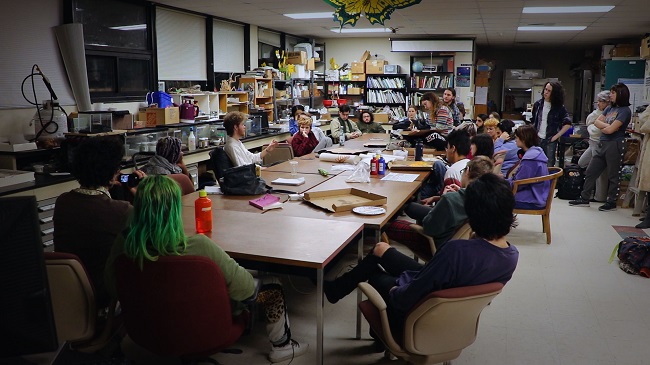The Unmaking of a College (Goldstein, 2022)
I suspect that viewers will enjoy or esteem The Unmaking of a College to the extent their politics and ideology are compatible with those of the students who organized “the longest sit-in in American college history” at Hampshire College.
That means I liked it well enough, but if I’m honest there were times when the participants induced more irritation than empathy.
The first was when Hampshire alum Ken Burns bragged about occupying the president’s office during his time as a student but admits that he can’t remember what the reason was that prompted the protest. The point of this insertion might have been to make clear what sort of student Hampshire attracts or to draw a contrast between past and present. Whatever the reason, the effect is to make protests come across as virtue signalling or chic activism.
The second moment was when contemporary students who were occupying the president’s office in protest shows off the office’s bathroom. “This is where I dye my hair…” she says. We are supposed to admire the students for their organization. They take shifts between protests so that they can still go to class. But this raises the question — at least it did for me — are they treating their protest area as a posh dorm room or a protest site. Perhaps this scene is meant to show the contrast between the facilities of the administration and those of the students, but we never see the students’ room. Plus the protest isn’t really about the president’s salary, it is about her agency in deciding to close the college or seek a partner to make up for budget shortfalls.
I don’t dislike documentaries with an editorial slant, but in the best of them, the filmmaker may use edits to demonstrate his/her awareness of attitudes of the participants that might be problematic. Queen of Versailles comes to mind. Or the participants themselves might be aware of how they are coming across and wrestle with the ways in which marketing their ideological actions is as important as what those actions are. Boys State would be an example here.
By contrast, I was never convinced that Unmaking had much curiosity to probe its subject matter. Students are innocent victims. The administration are villains. Again, this may be so, and I wouldn’t fault the film for which side it casts in white hats. But when you are told that budget shortfalls were made up for by Board of Trustee members writing personal checks, it is hard to assume everything is black or white.
Unmaking doesn’t just chronicle student activists, it interviews student investigators. Through them, the film takes a few surprising turns and reveals some unlikely players in the institutional drama. But unlike some of the best investigative documentaries, it appears to lack the resources to broaden the scope of its inquiry. Hampshire coming back from the brink of closure is presented as an early warning sign of what will follow but little effortt is made to explain how this incident is relevant to other colleges or what we might learn from it other than activism is good and apathy is not.
I give The Unmasking of a College a marginal “fresh” rating because it does speak to a disenchanted and discouraged population and tell the people in it that organization and dissent can still be effective political tools. A stronger film might have been less enamored by the students’ success and more willing to question why some protests work and some don’t. There’s a bit too much self-congratulation going on here for my taste, but I admire and respect what the students were able to accomplish.
The Unmaking of a College opens in New York on February 11 and Los Angeles on February 18.

